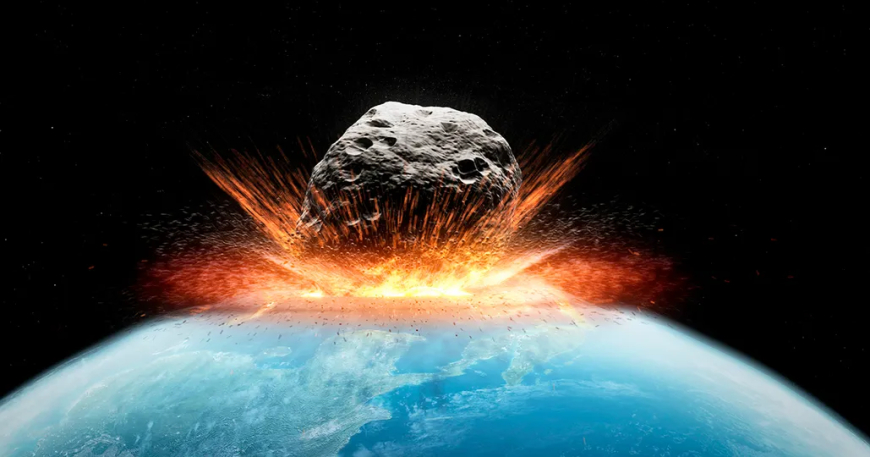Asteroid 2024 YR4: The 'City-Killer' Rocketing Towards Earth in 2032
Asteroid 2024 YR4 is on a potential collision course with Earth in 2032. Discover the latest impact predictions, affected cities, and future asteroid threats.

In a scenario reminiscent of science fiction, the astronomical community is closely monitoring Asteroid 2024 YR4—a celestial object with a potential collision course with Earth on December 22, 2032. This asteroid, measuring between 130 to 300 feet (40 to 90 meters) in diameter, has sparked discussions about planetary defense and the measures necessary to mitigate such threats.
Projected Impact Date: December 22, 2032
The critical date to note is December 22, 2032. On this day, Asteroid 2024 YR4 is projected to make a close approach to Earth. While space is vast and such objects often pass harmlessly by, the trajectory of YR4 has raised concerns due to its proximity and potential impact.
Potential Impact Zones
The "risk corridor" for YR4's possible impact spans several regions, including:
- Eastern Pacific Ocean: An impact here could generate significant tsunamis, affecting coastal areas across the Pacific Rim.
- Northern South America: Countries such as Colombia and Venezuela might experience direct impacts, with cities like Bogotá at potential risk.
- Atlantic Ocean: An oceanic impact could lead to massive tidal waves, threatening coastal cities along the Atlantic seaboard.
- Africa: Nations along the western coast, including Nigeria, with populous cities like Lagos, are within the potential impact zone.
- South Asia: Regions in India, particularly major urban centers like Mumbai and Kolkata, could be affected.
These areas collectively encompass over 100 million people, underscoring the importance of continuous monitoring and preparedness.
Fluctuating Impact Probabilities
Since its discovery on December 27, 2024, by the Asteroid Terrestrial-impact Last Alert System (ATLAS) in Chile, the estimated impact probability of 2024 YR4 has undergone significant changes. Initial assessments indicated a 1.2% chance of collision, which later increased to 3.1%—the highest ever recorded for an asteroid of this size. However, recent observations have reduced this probability to 1.5%. These fluctuations highlight the dynamic nature of asteroid tracking and the necessity for ongoing observations to refine impact assessments.
Potential Consequences of an Impact
Should 2024 YR4 collide with Earth, the consequences would be severe. An asteroid of this size could release energy equivalent to approximately 8 megatons of TNT, capable of causing widespread destruction over a 30-mile (50 km) radius. Such an event could obliterate entire cities, leading to catastrophic loss of life and infrastructure.
Other Asteroids of Concern
While 2024 YR4 has garnered significant attention, it is not the only asteroid posing a potential threat:
-
Asteroid 2023 DW: Discovered in February 2023, this asteroid has a projected close approach on February 14, 2046. Initial estimates suggested a 1 in 560 chance of impact, but subsequent observations have significantly reduced this probability.
-
Asteroid Bennu: Approximately 1,574 feet (480 meters) in diameter, Bennu has a 1 in 2,700 chance of impacting Earth on September 24, 2182. While the probability is low, the potential consequences of such an impact necessitate continued monitoring.
Advancements in Planetary Defense
In response to these potential threats, space agencies have been developing and testing planetary defense strategies. Notably, NASA's Double Asteroid Redirection Test (DART) mission in 2022 successfully demonstrated the ability to alter an asteroid's trajectory by impacting it with a spacecraft. This mission provides a viable method for deflecting potentially hazardous asteroids in the future.
Conclusion
The case of Asteroid 2024 YR4 serves as a stark reminder of the potential hazards posed by near-Earth objects. While current impact probabilities are low, the situation underscores the importance of vigilant monitoring, international collaboration, and the development of effective planetary defense mechanisms to protect our planet from celestial threats.
What's Your Reaction?
 Like
0
Like
0
 Dislike
0
Dislike
0
 Love
0
Love
0
 Funny
0
Funny
0
 Angry
0
Angry
0
 Sad
0
Sad
0
 Wow
0
Wow
0



















































